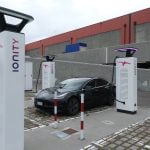Calling all car enthusiasts! Are you ready for the ultimate showdown in forced induction? It’s time to buckle up and get ready to witness a heavyweight bout – Prochargers Vs. Superchargers. These mechanical titans go head-to-head to give your ride that extra boost of power. Brace yourself for the adrenaline-pumping face-off between these power-packed rivals as we take a deep dive into the world of forced induction. Every bit of horsepower counts, so grab a seat while we dive into the deets!
Customized autos intrigue many speed fanatics, whether preparing their car for racing or simply adding more power. Although these components are not equal or similar, using a ProCharger or Supercharger is one way to achieve this.
The main aim of these modifications is to enhance the amount of air that flows into the engine, which leads to faster fuel combustion and increased car speed. The ProCharger and Supercharger are similar components with the same purpose, but they use different technology to offer the highest possible car performance.
What Is the Difference Between a Procharger and a Supercharger?
At first glance, the answer to this question is nothing. However, a more important question lurks beneath the surface: How is a ProCharger different from other supercharger kits available on the market, and what benefits can it offer? We need to look beyond the surface and delve deeper into the details to answer this question.
ProCharger vs. Supercharger
The ProCharger and Supercharger do the same thing: they increase your car’s horsepower and efficiency. Each boosts the amount of compressed air reaching the engine and forces it to burn more fuel. The difference is in the way the extra power is distributed.
What Is a ProCharger?
A ProCharger delivers steady airflow to the engine. It is a centrifugal supercharger that sucks air inwards through a spinning impeller, creating a powerful centrifugal force. After passing through the impeller, the air travels clockwise.
The air is compressed to high pressure and driven into the engine by a constant force from the ProCharger. Constant pressure avoids turbo lag for a smooth increase in power. The ProCharger is built into the engine and is small enough that it rarely requires additional modifications.
They do not, like superchargers, exceed the permissible force limit. However, they are more expensive than superchargers and generate a sound when in use.
| ProCharger | |
| Pros | Cons |
| At a steady rate, pure and dependable power enhancements are delivered | It makes a loud, audible whining noise when the engine is ramped up. |
| Lightweight and readily integrated to the front of the engine | |
What Is a Supercharger?
When your engine rotates, your supercharger spins as well. As your engine spins, the supercharger forces additional air into it. The diameter of the pulley placed will determine how much extra power your engine gains. Remember that a small pulley will rotate quicker, generating more energy, in this case. The engine in your car will receive a boost.
Superchargers are a relatively inexpensive way to increase the power of your car. There are several types of centrifugal superchargers, each with its benefits and drawbacks. They are versatile and come in various forms so that they may be installed in almost any car. However, due to their size, hood modification is frequently required.
Roots Supercharger
The Roots Supercharger is the most powerful and the most basic option. It is nestled into the intake manifold and often protrudes through the hood when installed. This supercharger works by forcing air through mesh lobes in the engine’s intake manifold to increase pressure. This allows the engine to be pushed with short bursts of air.
Twin-Screw Superchargers
Twin-screw superchargers use two long, spinning, screw-like components to pull in additional air and retain it till pressure is generated. These are much smaller than a Roots supercharger, which saves room, but their loudness necessitates the employment of a noise suppression device.
Superchargers provide drivers with rapid access to their generated power; yet, cars appear to lag slightly because the air is delivered into the engine in short bursts. Furthermore, because the engine powers the technology, it may degrade fuel economy and make refueling performance vehicles more expensive.
| Supercharger | |
| Pros | Cons |
| Press the gas pedal, and you’ll notice a massive increase in power. | Hefty and could affect the nature of your car |
| There is always a wide selection of possibilities available. | Air bursts incessantly |
Performance
A part’s total performance is influenced by several factors, the most important of which is the amount of extra push it provides to your car. Adding a ProCharger or Supercharger to your vehicle will undoubtedly boost its power. However, there are a few things to consider while deciding which one would deliver the best results.
While boosting your car’s horsepower gives you more power, the sensitivity of your gas pedal to that power could also play a role. There is no lag with superchargers. When you press the pedal, more power is directed right at you, even at low engine rpm. Imagine how much power it could generate at higher engine RPMs.
You can get the swift pedal-to-power reaction you want with Superchargers, and ProChargers provide a smooth and consistent climb that gradually acclimates you to the increased power. It’s also worth noting that increasing either increases engine heat or stress. As a result, make sure your vehicle is well-maintained and that the engine oil is regularly changed to ensure the chargers’ and your car’s longevity.
How much does it cost?
Increasing your car’s horsepower is appealing, and while it may raise the worth of your car, the cost is critical. What can you do to give it a lift without breaking the bank? When comparing the costs of two options, keep a few things in mind before deciding. Get a basic supercharger before spending $2500 on a high-quality, all-encompassing system. Consider how much power you want to get out of your car.
The established Roots Supercharger could be just the ticket for individuals eager to discover how rapidly they can accelerate from zero to sixty! For as little as $2700, you can acquire a massive Supercharger that provides a fast surge of smoother power. Unless you’re confident in your ability to safely and legally increase the capacity of your supercharger, a Procharger may be a better option.
Centrifugal Superchargers use a lot of gasoline to run, whereas centrifugal Prochargers use less. As a result, adopting the centrifugal Procharger could help you save money. Regular maintenance will help you to save money and extend the life of your vehicle—the more care you take with all parts of maintenance, the lower your overall maintenance expenditures will be.
Bottom Line
Although both ProChargers and Superchargers have the same goal, they accomplish it differently. The high-end Procharger is ideal for those wanting to run at high RPMs, but it might not be the best gadget for you if you require a boost at lower speeds or do not appreciate running so fast.
On the other hand, the Supercharger system will shine when you need low-speed performance, such as off-roading or driving about town. This might be either an increase in power output or an improvement in throttle response; both of these are excellent choices.

Sara Sam may not look like your typical car and finance expert, but don’t let that fool you. With over four years of experience in the industry, she knows all the ins and outs of cars, car insurance, and refinancing. You can trust Sara to help you navigate the often-confusing world of automobiles and financing.

















